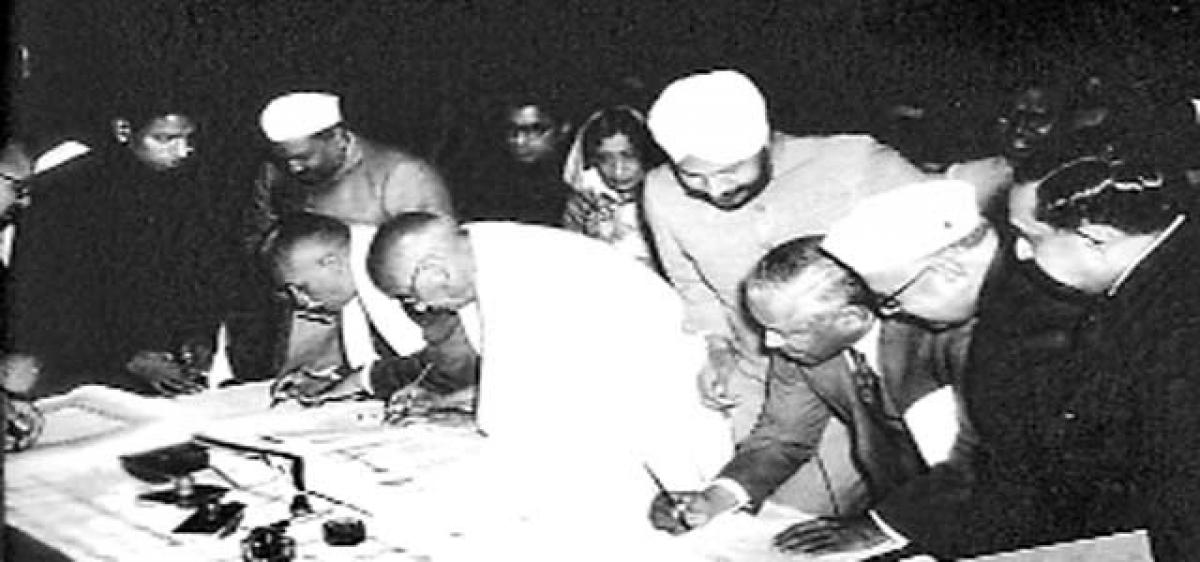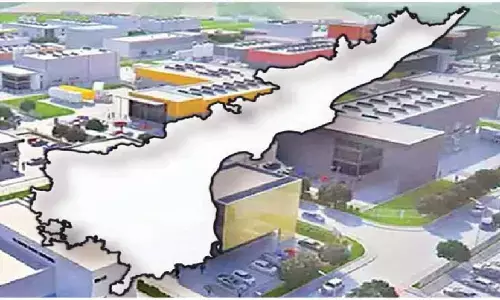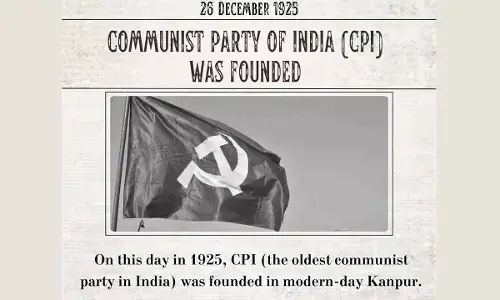The making of the Constitution

The Indian Independence Act 1947:- The bill which was introduced in parliament on July 4th was passed and placed on the statute book with amazing speed, received the royal ascent on July 18th and came into force from that date as the Indian Independence Act 1947.
The Indian Independence Act 1947:- The bill which was introduced in parliament on July 4th was passed and placed on the statute book with amazing speed, received the royal ascent on July 18th and came into force from that date as the Indian Independence Act 1947.
This act provided for setting up of two independent dominions to be known as India and Pakistan. It empowered the constituent assemblies of two dominions to have unlimited power to frame and adopt any constitution and to repeal any act of the British parliament which was inimical to their interests including Independence act.
The constituent assembly which had been elected for undivided India and held its 1st sitting on the 9th Dec, 1946, reassembled on the 14th August 1947 as the sovereign constituent assembly for the dominion of India.
The following were the features of constituent assembly of dominion of India which was formed in accordance with Indian Independence Act 1947:-
Sovereign body: The assembly was made a fully sovereign body and it was empowered to frame the constitution according to its choice and to abrogate or alter any law made by the British parliament in relation to India.
Legislative body: The constituent assembly also became a legislative body, it means as an assembly it was empowered to make ordinary laws for the country apart from the constituent functions. Dr.Rajendra Prasad chaired as president of the constituent assembly when it was performing constituent functions and Dr.G.V.Mavlankar used to chair the assembly when it was performing ordinary legislative functions.
Strength of the Assembly: The strength of the assembly was reduced to 299 as against 389 which was originally fixed in 1946 under cabinet mission plan because of the partition of the country. The strength of the Indian provinces was reduced to 229 from 296 and of those of the princely states from 70 to 93. Of these 284 were actually present on the 26th Nov, 1949 and appended their signatures to the constitution when it was finally passed.
Additional functions of the Constituent Assembly:- Apart from discharging the constituent functions and law making functions the constituent assembly also performed the following additional functions:
1)It ratified the India’s membership of the common wealth in May 1949.
2)It adopted the national flag on July 22, 1947.
3)It adopted the national anthem on Jan 24, 1950.
4)It adopted the national song on Jan 24, 1950.
5)It elected Dr.Rajendra Prasad as the 1st president of India on January 24th 1950.
The constituent assembly had 11 sessions over two years, 11 months, 18 days. The constitution makers had gone through the constitutions above 60 countries and the draft constitution was considered for 114 days.
On Jan 24th, 1950 the constituent assembly held its final session. From then onwards it was turned into the provisional parliament of India from Jan 26,1950 to the formation of new parliament after the 1st general elections in 1951-52.
Committees of the Constituent Assembly: The constituent assembly appointed a number of committees to deal with different tasks of constitution making. Out of these 8 were major committees and the remaining were minor committees. The names of these committees and their chairman are given below.
Major committees
1)Union powers committee- Jawarharlal Nehru
2)Union constitution committee- Jawaharlal Nehru
3)Provincial constitution committee –Sardar patel
4)Drafting committee – Dr.B.R.Ambedkar
5)Advisory committee on fundamental rights, minorities and tribal and excluded areas- Sardar Patel. It was subdivided into the following commities-
a)Fundamental Rights subcommittee- J.B.Kriplani
b)Minorities Subcommittee- H.C.Mukherjee
c)North-east frontier tribal areas and Assam excluded and partially excluded areas subcommittee - Gopinath Bardoli.
d)Excluded and partially excluded areas other than those in Assam subcommittee - A.V.Thakkar.
6)Rules of procedure committee- Dr.Rajendra Prasad
7)States committee - Jawaharlal Nehru
8)Steering committee -Dr.Rajendra Prasad.
Minor committees
1)Committee on the functions of the constituent assembly - G.V.Mavalankar
2)Order of business committee- Dr. K.M.Munshi
3)House committee- B.Pattabhisitaramaiah
4)Ad-hoc committee on the national flag- Dr.Rajendra Prasad
5)Special committee to examine the draft constitution - Alladi Krishnaswamy Iyer.
6)Credentials committee - Alladi Krishnaswamy Iyer.
7)Finance and staff committee- Dr.Rajendra Prasad
8)Hindi translation committee
9)Urdu translation committee
10)Press gallery committee
11)Committee to examine the effect of Indian independence act of 1947
12) Committee on chief commissioners provinces - B.Pattabhisitaramaiah
13)Commission on linguistic provinces
14) Expert committee on financial provisions
15)Ad-hoc committee on the Supreme court- S.Vardhachariar
The drafting committee prepared the 1st draft constitution of India in February 1948. The 2nd draft was prepared in October 1948. The committee took less than 6 months to prepare its draft.
Enactment of the Constitution:- Dr. B.R.Ambedkar introduced the final draft of the constitution. The assembly had a general discussion on it for five days. The second reading started on November 15th, 1948 and ended on October 17th, 1949.
The third reading of the draft started on November 14th, 1949. Dr.Ambedkar moved a motion-“the constitution as settled by the assembly be passed”.
The motion and draft constitution was declared as passed on November 26th, 1949. 284/299 members affixed their signature to the constitution.
On the same day the people of India in the constituent assembly adopted, enacted and gave to themselves this constitution. The original constitution which was adopted on November 26th, 1949 consisted of a preamble, 395 articles and 8 schedules.
The preamble was enacted after the entire constitution was already enacted.
Dr.B.R.Ambedkar was the 1st law minister piloted the draft constitution in the assembly. He is recognized as the father of the constitution of India.
Enforcement of the Constitution:- The provisions related to citizenship, elections, provisional parliament, temporary and transitional provisions and some articles such as 5,6,7,8,9,60,324,366,367,379,380,388,391,392 and 393 came into force on November 26th, 1949. The major part of the remaining constitution came into force on Jan 26th, 1950 which is considered as the commencement date and the Republic day.
This day has historical significance because on this in 1930 the Poorna Swaraj day was celebrated in accordance with the Lahore session of Indian National congress in December 1929.
With the commencement of the constitution all acts were repealed except the abolition of privy council jurisdiction act 1949.
As on December 31st, 1947 the 12 Indian provinces represented 229 members and 29 princely states represented 70 members. Thus, the total strength of the assembly was 299 members. The total number of sessions of the constituent assembly was 11.
Drafting committee: The drafting committee was the most important of all the committees. It consisted of 7 members.
1)Dr.B.R.Ambedkar- chairman
2)N.Gopalaswamy Iyengar
3)Alladi Krishnaswamy Iyer
4)Dr. K.M.Munshi
5)Syed mohammad saadullah
6)N.Madhavarao
7)T.T. Krishnamachary
| Interim Government (Viceroy’s Executive council) 1946 |
| Office | Name |
|---|---|
| Vice President of the Executive Council | Jawaharlal Nehru |
| External Affairs and Commonwealth Relations | Jawaharlal Nehru |
| Agriculture and Food | Rajendra Prasad |
| Commerce | Ibrahim Ismail Chundrigar |
| Defence | Baldev Singh |
| Finance | Liaquat Ali Khan |
| Education | C. Rajagopalachari |
| Health | Ghazanfar Ali Khan |
| Home Affairs | Vallabhbhai Patel |
| Information and Broadcasting | Vallabhbhai Patel |
| Law | Jogendra Nath Mandal |
| Railways and Transpot | Asaf Ali |
| Works, Mines and Power | C.H. Bhabha |
| Posts and Air | Abdur Rab Nishtar |
| Labour | Jagjivan Ram |
| First cabinet of free India 1947 |
| Portfolio | Minister |
| Prime Minister Minister of External Affairs and Commonwealth Relations Minister of Scientific Research | Jawaharlal Nehru |
| Deputy Prime Minister Minister of Home Affairs and States Minister of Information and Broadcasting | Sardar Vallabhbhai Patel |
| Minister of Finance | Finance R. K. Shanmukham Chetty |
| Minister of Law | B. R. Ambedkar |
| Minister of Defence | Baldev Singh |
| Minister of Railways and Transport | John Mathai |
| Minister of Education | Maulana Abul Kalam Azad |
| Minister of Food and Agriculture | Dr.Rajendra prasad |
| Minister of Industries and Supplies | Supplies Syama Prasad Mookerjee |
| Minister of Labour | Jagjivan Ram |
| Minister of Commerce | C.H.Bhabha |
| Minister of Communications | Rafi Ahmed Kidwai |
| Minister of Health | Amrit Kaur |
| Minister of Works, Mines and Power | Narhar Vishnu Gadgil |

















